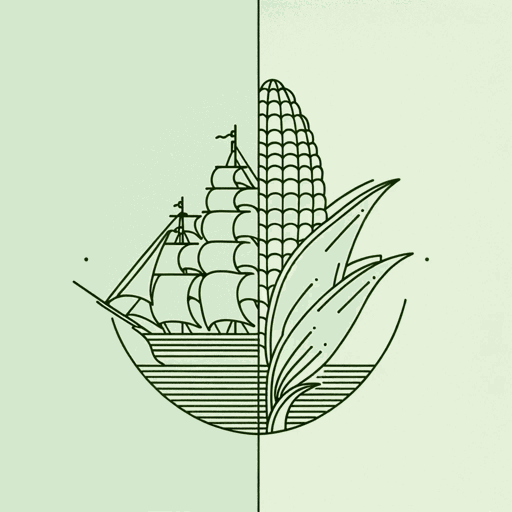40 pages • 1 hour read
Alfred W. CrosbyThe Columbian Exchange: Biological and Cultural Consequences of 1492
Nonfiction | Book | Adult | Published in 1972A modern alternative to SparkNotes and CliffsNotes, SuperSummary offers high-quality Study Guides with detailed chapter summaries and analysis of major themes, characters, and more.
Summary and Study Guide
Overview
The Columbian Exchange: Biological and Cultural Consequences of 1492 is one of the first environmental histories and was published in 1972. It has remained in print since and was reissued in 2003 as a special 30th anniversary edition with a new preface and foreword. This study guide refers to the 2003 Praeger edition of the book.
Crosby earned his Ph.D. in history at Boston University and was a professor of geography, history, and American studies at the University of Texas. Crosby was a civil rights activist and supported the United Farm Workers Union. His books are published in 12 languages; among the most recognized are Ecological Imperialism: The Biological Expansion of Europe, 900-1900 and America’s Forgotten Pandemic: The Influenza of 1918. His 2018 New York Times obituary referred to him as the “father of environmental history.”
Content Warning: This book uses terminology such as Old World and New World, which is Eurocentric and inaccurate. It also consistently uses “Indian” to refer to Indigenous people, although the author identifies this terminology as inaccurate in the preface. This guide uses “Indian” only in quoting Crosby’s language. This guide also discusses the enslavement of African and Indigenous people.
Plot Summary
Alfred W. Crosby, Jr.’s The Columbian Exchange concerns the long-term biological impact of contact between the Americas and Europe, as well as Africa and Asia. Human both purposely and accidentally transformed the globe through this exchange of plants, animals, human beings, and diseases. Using scientific data and primary sources (documents written during the period under study), Crosby argues that while the Columbian Exchange had some short-term positive effects on the world, its overall impact is destructive.
Crosby begins by explaining the differences between the Americas and the rest of the world. These contrasts were the result of millennia of geographical isolation. Humans migrated to the Americas across the Bering land bridge thousands of years ago. Once this bridge was submerged again, inhabitants of the Americas developed in isolation. When Europeans later encountered the American continents, they were hard-pressed to explain the contrasts between this region and their own—such as the noticeable differences in flora, fauna, and humans’ physical appearances—due to their era’s Christian worldview that God created all life at once. While some put forth new theories of multiple creation, the church deemed these perspectives blasphemous and justified the subordination of Indigenous peoples to papal—and, thus, European—rule by claiming they were part of God’s singular creation.
The conquest of the Americas was not due to superior European technology but was the result of a different kind of warfare: biological. Europeans transported numerous diseases across the Atlantic that did not exist in North and South America because of the region’s isolation. Indigenous peoples, thus, had no natural immunity to these illnesses, such as smallpox, which killed them swiftly and in vast numbers. The origin of syphilis is debated, but some scientists claim that it probably originated in the Americas and was brought back to the Continent by Europeans; however, it was not as devastating to European populations as Europeans’ diseases were to the Americas. It did, however, cause fear and potentially strain social relationships.
Europeans brought new crops and livestock to the Americas that transformed and sometimes damaged the landscape. Wheat, olives, and grapevines were staple Spanish crops, for example, but Spanish colonists initially had difficulty growing them in new climates. However, they soon found zones of the Americas that could support their growth. Nevertheless, survival also necessitated that Europeans embrace the cultivation of indigenous crops such as maize, manioc, and potatoes. These American crops soon found their way to Europe, Africa, and Asia, where farmers embraced them, especially when people realized that they could complement rather than compete with what they already grew. This crop diversification caused massive global population growth from the early modern period into the modern era. European demographic growth led to a steady flow of emigrants to European colonies around the world, including the Americas, which further displaced Indigenous peoples from their lands. Likewise, the introduction of European livestock like cattle and horses also displaced Indigenous populations and intruded on their farmlands, negatively impacting the amount of plant food they could produce and further harming Indigenous groups. The arrival of European plants and animals in the North and South American continents also contributed to environmental degradation and ecological disruption from which the land never recovered. Crosby concludes that the Columbian Exchange harmed and continues to harm the world and its people.
Related Titles
By Alfred W. Crosby


